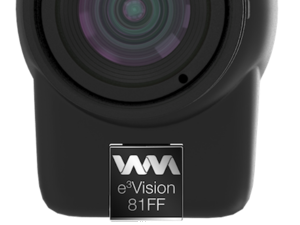Software
Quick Start
See our guides for Quickstart and firmware updates.
Design
Design goals
Our cameras are designed to work with our turnkey, multi-platform (Windows + Mac + Linux) software called Watchtower. It’s free of charge, constantly updated, and does not incur any annual recurring fees. Use involves setting the resolution, names, primary sync pulse camera; video files will be written that are frame-synchronized between any number of cameras.
It can also act as a server and be operated and viewed remotely from a laptop or phone under the same network, which is convenient to keep an eye on the experimental recordings from the office.
MAC address, hostname
Each e3Vision camera is labeled with its serial on its main ethernet connector, which also forms part of its Layer 2 MAC address, as well as multicast DNS hostname.
The MAC address for each camera unit is 70-B3-D5-36- [serial].
The mDNS hostname for each camera unit is e3v [serial] .local
For the above example camera unit:
| Serial | MAC Address | mDNS hostname |
|---|---|---|
81FF |
70-B3-D5-36-81-FF |
e3v81ff.local |
In particular, MAC addresses may be needed for access control depending on how you configure the e3Vision network layout, especially the Open Network Bridge layout.
You may need to register all MAC addresses with your organization’s network administrators if you want to connect a e3Vision hub uplink directly to an organizational network, such as a campus network.
Service ports
These network ports and protocols are used by e3Vision camera and and Watchtower software, which may be useful for your device firewall management, as well as to organizational network administrators to determine allowed network ports and traffic.
| Endpoint | Application Protocol | Protocol | Ports |
|---|---|---|---|
| Camera | Command (ZMTP) | TCP | 38889 |
| Camera | multicast DNS | UDP | 5353 |
| Watchtower | Video stream (ZMTP) | TCP | 38890–38891 |
| Watchtower | multicast DNS | UDP | 5353 |
States
This flowchart shows what API actions are possible in each camera state, and how to transition between the various states of the cameras.

